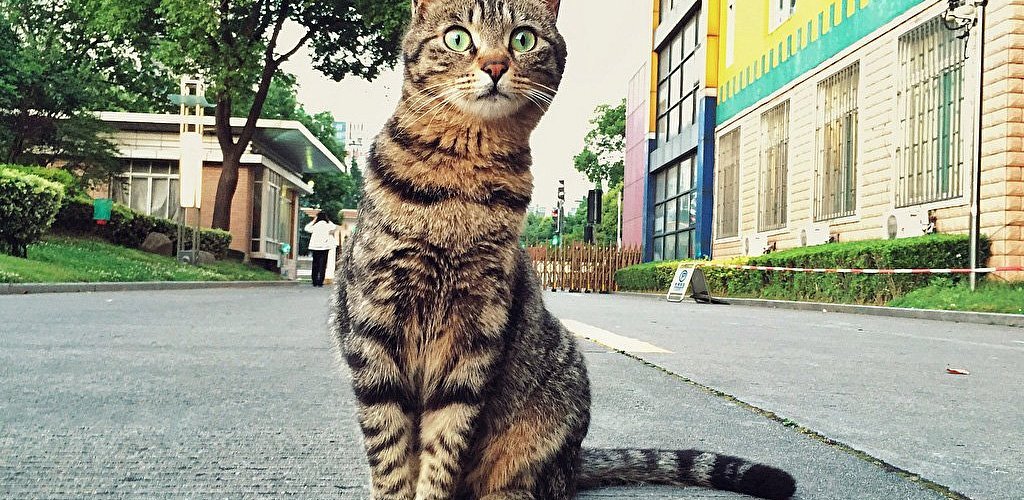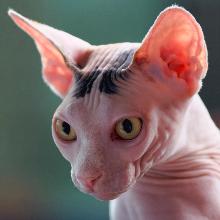How long do cats live

You've probably heard that 1 year of a cat's life is equivalent to 7 human years. Then natural questions arise: How many years do cats live? Is it correct to compare this time with ours? How to extend the period of active longevity of a beloved pet? The answers to these and many other questions, as well as useful tips, are in our article.
General information
On that special day when a small fluffy lump appears in the house, the newly-made owners worry little about how many years he will live. Over time, the baby turns into a luxurious fluffy cat and takes pride of place in the family circle. As adulthood approaches , the owners begin to have disturbing thoughts: "How many years will a cat live?"
On average, domestic cats live 10-16 years, but you need to understand that this figure depends on the breed, conditions of maintenance, nutrition, heredity and many other parameters.
Wild cats live less than domestic cats, about 5-6 years. Even less is the life expectancy of unadapted animals who were kicked out of the house on the street – 4 years. This is due to constant stress, the need to struggle for existence, poor-quality food, severe weather conditions, diseases, uncontrolled pregnancies and complications after them.
Note: on average, cats live longer than cats, which is due to the wear of the body of the latter after childbirth.
Pets who find themselves in a loving family can live up to 18-20 years. At the same time, the life expectancy of baleen-striped has increased significantly in recent decades, thanks to the development of medicine.
Comparing the age of a cat and a human
Thinking about the age of a pet, I want to count it in a human way. The simplified formula tells us that one cat year goes for seven of our years. However, in fact, this relationship is nonlinear.
In the very first year of life, a tiny warm lump goes a long way, turning into a "15-year-old teenager". In the second year, he lives for as long as 9 years, that is, the cat becomes 24 years old. Every next year adds 4 human years to him. The key point is considered to be the 7-year-old age, or 44 years in our opinion, when the cat shows the first signs of aging. If a pet has lived for 16 years, then translated into human years is 80 years.
How many years do cats of different breeds live
This issue is often controversial. Veterinarians believe that the life expectancy of a domestic cat depends more on the existing diseases and care, and not on its breed. Breeders who have noticed that representatives of different breeds have different life spans disagree with them.
To begin with, let's compare thoroughbred and simple cats. Genetically healthy, purebred parents have purebred kittens. Naturally, they have much more chances to live a long happy life in the family than their wandering brethren.
Cats, who owe their birth to breeding, have relatively poor health. Their body structure was artificially altered by geneticists. Other breeds are native, they appeared naturally, adapting to environmental conditions. If we compare "designer" and "natural" purebred cats, the latter live longer. Breeding breeds are prone to genetic diseases and need special care.
Consider the average lifespan of popular breeds.
Brits
British kittens have developed muscles, strong immunity and lead an active lifestyle. Representatives of this breed live 12-15 years, and some live up to 20, of course, with proper care. British cats rarely have genetic diseases. The risk of cancer is low.
Scottish Fold Cats
Lop-sided teddy bears are real centenarians! They have an enviable immunity and can live up to 20 years. Regularly inspect your pet, as its weak points are the ears and spine.
Siam
Siamese cats live for 14-18 years. However, this breed has incredible endurance, and among them there are centenarians who live to the age of 30. Predisposition to a long life can be passed down from generation to generation, therefore, before choosing a kitten, check with the breeder his pedigree.
Abyssinian cats
With proper maintenance, Abyssinians live for about 15 years, individual kittens live up to 20. Representatives of this breed have a predisposition to diseases of the kidneys, retina, blood and teeth.
Persians
Each variety of the Persian breed has its own indicator of life expectancy. Seals with a short nose live longer than their extreme and classic counterparts - 20 years against 15. It is important to pay special attention to cats who have crossed the 10-year mark. At this time, the Persian's immunity weakens, problems with joints, spine and kidneys may occur. You need to visit the veterinarian regularly, carefully take the cat in your arms, take pauses in games. It becomes difficult for some Persians to bend down, they should put the bowl on a small elevation.
Russian Blue Cats
With proper maintenance at home, Russian blue cats live an average of 15 years. It is possible to maximize the life time of cats up to 18-19 years. Starting from the age of 8, the owner must annually show his pet to the veterinarian.
Bengals
Bengal cats live a long time, thanks to the absence of cardiovascular diseases. The average life expectancy is 15-16 years. Graceful Bengals are one of the strongest and most hardy breeds.
Sphinxes
The average life span of a sphinx is 10 years, but bald cats can please their owners for all 20 years. There is even a known case when the sphinx lived for 31 years. Pets of this breed can boast of excellent immunity even in venerable years.
Other breeds
The real centenarians reaching 20 years are the Thai breed, the American Shorthair and the Manx. Asian Tabby and Egyptian Mau live a year less on average. Devon Rex, Japanese bobtail and Tiffany are coming of age. A little less – 17 years – live the Australian smoky, Neva masquerade and Maine Coon. 15-16 years is the limit for the Arabian Mau, Asian shorthair breed and Selkirk Rex. Exotics, York chocolate cats, American bobtails live up to 14, 13 years old. Bombay cat and snowshoe can please their owners for 12 years.
Balanced nutrition
How long a domestic cat will live depends greatly on its diet. A balanced diet is a reliable building material for the pet's body. The main question that arises from the owner of the cat: "What kind of nutrition is considered correct?"
Most veterinarians believe that it is better to feed the cat with ready-made feeds that contain all the minerals, nutrients, and vitamins necessary for health. But some experts suggest that such feeds increase the risk of developing urolithiasis and diabetes. due to the high content of salt and carbohydrates. It is better to give preference to premium and super-premium feeds. Manufacturers of cheap feed save on protein, such products contain no more than 10% of meat, the rest is vegetable protein and chemical components.
Sterilization
Sterilized cats live several years longer than their furry girlfriends – 15-20 years. But the situation is not as unambiguous as it may seem at first glance: according to some doctors, sterilization can lead to apathy and inactivity of the animal, which will further affect the development of diabetes, obesity and eventually lead to a reduction in life.
By the age of 8 months, cats become sexually mature individuals and can give birth several times a year, but pregnancy is accompanied by hormonal changes. Hormone surges are a great stress for the cat's body and have a negative impact on life expectancy. Moreover, pets who do not give birth and are not sterilized are at an even higher risk of cancer.
Without sex glands, a cat does not need contact with the opposite sex, which means she will not get a dangerous disease from a male.
Genetics and chronic diseases
Each breed has its own strengths and weaknesses. Naturally, only healthy cats live for a long time. If there is a chronic disease, it is unlikely that the pet will become a long-lived woman. So, a kitty with diabetes will be able to live a maximum of 4 years if she is well cared for. Urolithiasis reduces life expectancy to 5 years from the moment of its appearance.
Long-lived cats
In the Guinness Book of Records, a long-lived cat from Texas – Cream Puff is recorded. She was born in 1967, and died in 2005. Cream Puff lived for 38 years and 3 days. Its owner was an American from the state of Texas.
She has a competitor from the UK. Lucy's cat is already 43 years old. By human standards – 188 years! She is cheerful, cheerful and energetic, but she has almost lost her hearing.
The beautiful Lady Catalina lives in Australia. This Burmese cat is 37 years old. Despite her advanced age, she is active and healthy.
Tips for hosts
- Organize high-quality proper nutrition for the cat, access to clean water and compliance with a special diet, if necessary. Keep an eye on the portion sizes, it is especially important not to overfeed the pet after sterilization or castration. It is strictly forbidden to feed cats with pork (high fat content), bones (damage to the food tract), legumes (bloating), dog food.
- Do not miss regular routine checkups with a veterinarian and vaccination. Treat the cat with attention and love, these fluffy beauties are able to mask their pain, so at the slightest changes in the behavior or condition of the pet, it is better to consult a specialist.
- If you do not plan to breed cats, neuter or sterilize the animal. This will help him stay healthy for many years.
- An active lifestyle with regular physical activity is the best friend of long–lived animals.
- Strictly observe hygiene standards, take care of the teeth of the animal, do not neglect the prevention of worms and fleas.
And remember, the cat does not have 9 lives, as the cliche tells us, but only one, which she will spend next to you. May every day be filled with joy and happy moments for both of you! Take care of the fluffy beauty – and she will fully repay with her tenderness and love.







